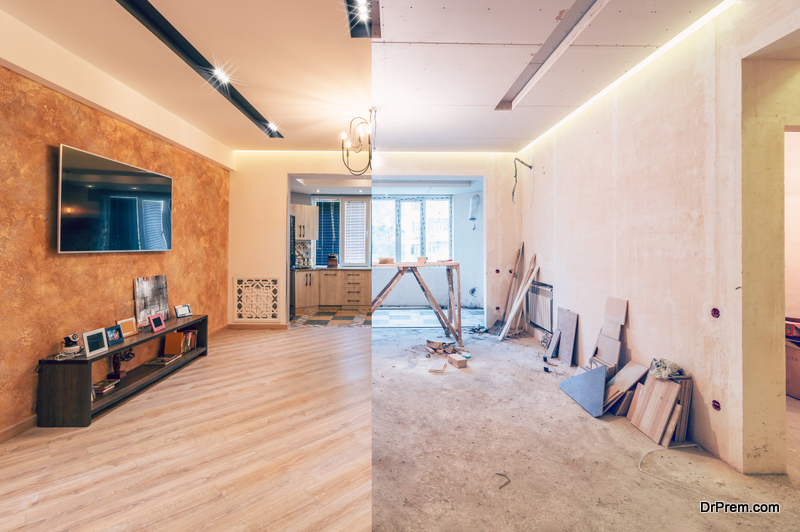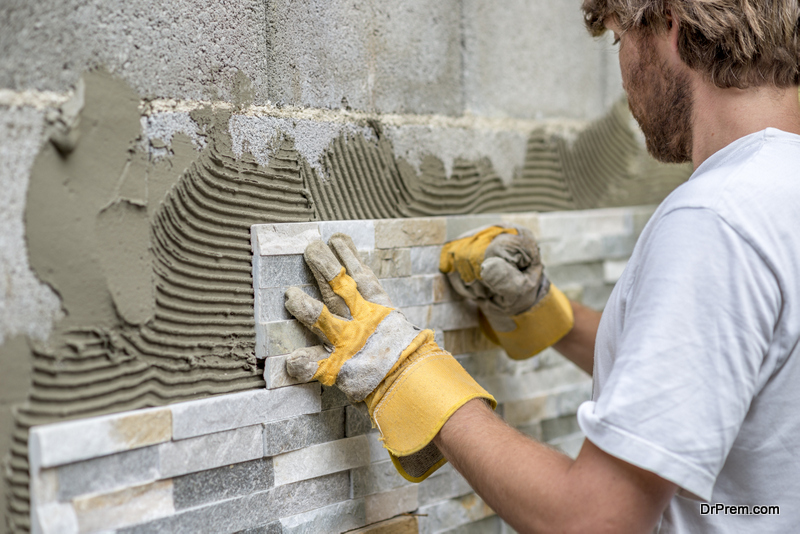Renovating a home is a major project that can be both exciting and scary. The best part about it is you get a home with your own personal touch and style at the end of the project. If you are planning on selling the property, an upgraded property will fetch you a higher price. Home renovation can be costly, depending on what part of the house you are renovating. Hardwood floors, for instance, are a lot more costly than carpeting. Kitchens can also be pretty expensive. According to an analysis by remodeling magazine, an average major kitchen renovation cost over $60K. You should expect some surprises as you go uncovering layers that have been around decades. Having a flexible mindset will save you frustrations of unprecedented needs. In this blog, we share the most crucial steps in home renovation.
Planning Stage
1. Create a detailed project plan
 To avoid disappointments and frustrations, you should plan your home renovation at least six months in advance. Create a detailed plan that sets the goal of your renovation. This should include sketches, pictures, and blueprints of your finished project. It would be best if you also investigated local zoning regulations and necessary permits as there may be restrictions in some places; for instance, garage conversions are not allowed in some places. In some instances, if your renovation project will change your home’s structure or the purpose of a room or space, you will most likely need a permit.
To avoid disappointments and frustrations, you should plan your home renovation at least six months in advance. Create a detailed plan that sets the goal of your renovation. This should include sketches, pictures, and blueprints of your finished project. It would be best if you also investigated local zoning regulations and necessary permits as there may be restrictions in some places; for instance, garage conversions are not allowed in some places. In some instances, if your renovation project will change your home’s structure or the purpose of a room or space, you will most likely need a permit.
Other factors to consider in the planning stage include:
- Consult your family about style and design – A home renovation should involve every member of the home. Involve other decision-makers in your home and create something that will stand the test of time. Choose a theme for the renovation. You can go for rustic, ranch style, modern, farmhouse, or even colonial.
- Vision – Your vision is what inspired the renovation. It could be the need for more space or the need for a more upgraded kitchen or a newborn on the way. Create a list of dreams you have for your home then list them in order of priorities to fit your budget.
- Future expectations – When renovating a home, you should cater for future plans. For instance, if you are remodeling part of the house like the kitchen, you should consider future renovations, especially if it will require ductwork, electrical changes, and so on. You should also consider your family’s plans, for instance, if you plan on expanding your family that too should be catered for in terms of space. As kids grow to teenagers, their needs may change, and this is something to consider.
2. Budget
Talking of budget, you should create a budget for the project in advance. Your budget will guide many aspects of the project and what is the most important thing to consider. You should also ensure your budget covers unforeseen circumstances during the renovation.
3. Hiring a Contractor
 This is one of the most crucial steps of your renovation. Once you find a contractor, do not be afraid to quiz them about everything. Discuss your goals, budget, and vision with them and ask their professional opinion about these details. Do not be convinced to switch to an expensive product that will blow your budget. It is also essential to check their history, projects they have previously completed, and reviews from previous clients. You should also find out if your contractor could hire subcontractors such as electricians and plumbers on their own.
This is one of the most crucial steps of your renovation. Once you find a contractor, do not be afraid to quiz them about everything. Discuss your goals, budget, and vision with them and ask their professional opinion about these details. Do not be convinced to switch to an expensive product that will blow your budget. It is also essential to check their history, projects they have previously completed, and reviews from previous clients. You should also find out if your contractor could hire subcontractors such as electricians and plumbers on their own.
4. Permits and Insurance
The ideal contractor should also be insured and have the necessary permits required to do the job. If there are any permits needed, they should help you apply for them. Home insurance will help you cover the cost of damages or if some of your property is stolen during the renovation period.Click to read more about home insurance.
5. Create a Timeline
 The last step in the planning stage is creating a timeline of events. House renovations can take up to 8 weeks, depending on how big the projects you will be taking are. If there are parts of the house that you will be replacing entirely, for instance, cabinets, then start making orders in time. You may need to buy some products in the advance stage to ensure everything is done on time. Creating a timeline will also reduce the amount of time you and your family will be hibernating away as the construction is taking place.
The last step in the planning stage is creating a timeline of events. House renovations can take up to 8 weeks, depending on how big the projects you will be taking are. If there are parts of the house that you will be replacing entirely, for instance, cabinets, then start making orders in time. You may need to buy some products in the advance stage to ensure everything is done on time. Creating a timeline will also reduce the amount of time you and your family will be hibernating away as the construction is taking place.
Demolition Stage
Once you have reviewed your plans with the contractor and are ready to go, the next stage is the demolition stage. Demolition should be done carefully, especially if you will be saving some parts for repurposing. Demolition should not affect the sturdiness of the foundation and roof. You do not want a house that will be falling apart once the renovations are over. You should also get a dumpster on-site from Prime Dumpster Incorporated to get rid of the debris as the project continues.
Reconstruction

- Structural Repairs – Start with structural repairs first. What is the point of having a modern and updated kitchen under a leaking roof? Repair the roof and any other structural features that need some updating. It would be best if you also assembled any doors or windows at this stage
- Electrical, Ductwork, and Plumbing – The next stage of reconstruction is the installation of all ductwork, plumbing, and electrical work. This is your chance to update water lines and install electrical connections in places where you will be installing new appliances.
- Walls – After all behind the scenes, it is time to encase everything in your updated wall and ceilings. Complete all the necessary work on walls and ceilings but for the finishing.
- Flooring – Flooring can be installed before or after painting, depending on the contractor. Some contractors prefer that they are installed after to avoid getting damaged with paint.
- Cabinets and Appliances – Cabinets and appliances are installed next. Everything from countertops to storage cabinets should be installed at this stage. The next process will be the installation of appliances such as cookers, ovens, and so on.
- Finishes – The last step is the final touches. This includes painting and application of wallpapers. You can bring an interior decorator on board at this stage if you are not confident in your style. The final touches are what will meet the eye when one walks into your home. They should, therefore, be a reflection of your aesthetic and style.
Much as home renovations can be hectic, having the right experts and insurance will give you peace of mind. After all the hard work, the best part is enjoying your new space, just the way you like it. Nothing beats the joy of coming home to a space that has your style and presence.
Article Submitted By Community Writer




